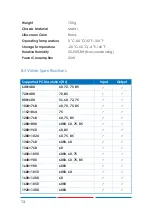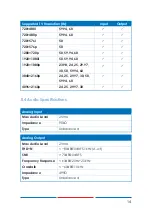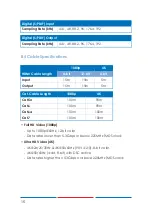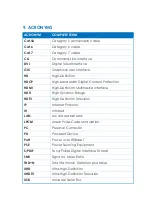
5
Note 3: Only one host connection is supported at a time. USB
functionality will be disabled if host devices are connected to both
sides simultaneously.
6.2
Transmitter's Rear Panel
LAN 1~2:
Connect directly, or through a network switch, to your
PC/laptop to control the unit via Telnet/WebGUI and to extend the
network across the HDBaseT connection.
Note: Connect only one Ethernet port from the HDBaseT
Transmitter/Receiver pair to the local network. Connecting multiple
ports to the same local network may result in a feedback loop and
cause the network to fail.
IR EXTENDER 2:
Connect to the provided IR Extender to extend
the IR control range of remotely located devices. Ensure that the
remote being used is within direct line-of-sight of the IR Extender.
IR BLASTER 1:
Connect to the provided IR Blaster to transmit IR
signals to devices within direct line-of-sight of the IR Blaster.
RS-232:
Connect to a PC, laptop or serial controllable device for
the extension of RS-232 signals between both ends of the HDBaseT
connection in "Bypass" mode, or for control this unit when in
"Console" mode.
CONSOLE/BYPASS:
This switch controls the operational mode of the
RS-
232 port. When set to “Bypass”, RS
-232 signals will be passed to
the connected Receiver. When set to “Console” the RS
-232 port
will send commands directly to the Transmitter.
Note: RS-232 bypass requires both the Transmitter and Receiver to
be set to “Bypass” mode. "Console" mode is currently reserved
for
factory use only.
HDBaseT OUT:
Connect to a compatible HDBaseT Receiver with
a single Cat.5e/6/7 cable for transmission of all data signals. 48V
PoH will also be supplied when connected to a compatible PD
Receiver.
IR
2
LAN 1
LAN 2 EXTENDER BLASTER
BYPASS HDBaseT OUT HDMI IN
Summary of Contents for CHE-HDBT400U
Page 4: ......







































